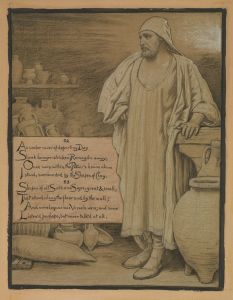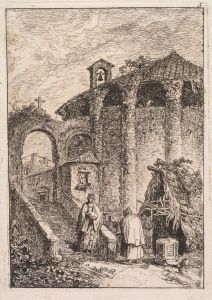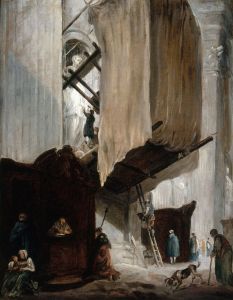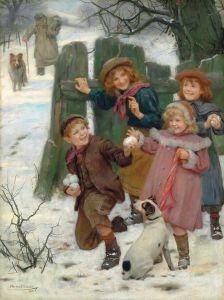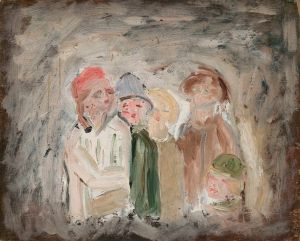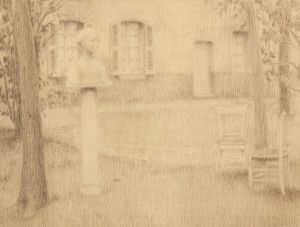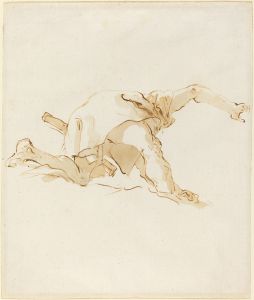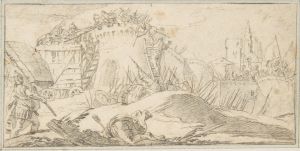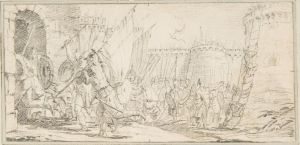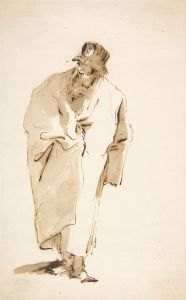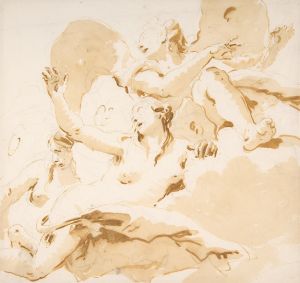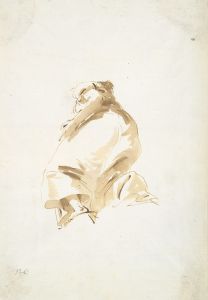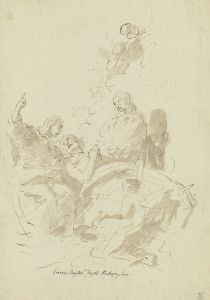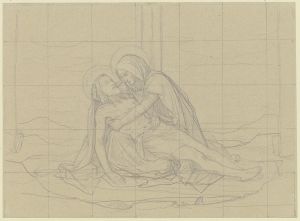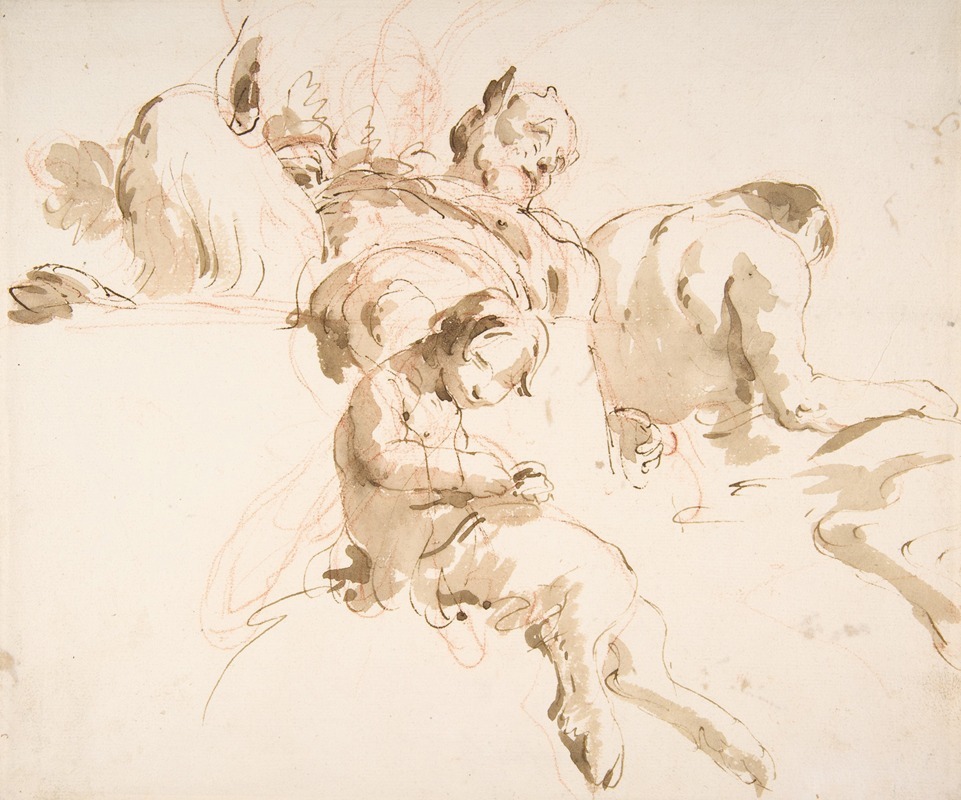
Two Seated Satyrs and a Child Satyr
A hand-painted replica of Giovanni Battista Tiepolo’s masterpiece Two Seated Satyrs and a Child Satyr, meticulously crafted by professional artists to capture the true essence of the original. Each piece is created with museum-quality canvas and rare mineral pigments, carefully painted by experienced artists with delicate brushstrokes and rich, layered colors to perfectly recreate the texture of the original artwork. Unlike machine-printed reproductions, this hand-painted version brings the painting to life, infused with the artist’s emotions and skill in every stroke. Whether for personal collection or home decoration, it instantly elevates the artistic atmosphere of any space.
Giovanni Battista Tiepolo, an Italian painter and printmaker, is renowned for his distinctive style that epitomizes the grandeur and drama of the late Baroque period. Among his extensive body of work is the painting "Two Seated Satyrs and a Child Satyr." This artwork is a fine example of Tiepolo's ability to blend classical themes with his unique artistic flair.
Tiepolo was born in Venice in 1696 and became one of the most prominent painters of the 18th century. His works are characterized by their vibrant colors, dynamic compositions, and the use of light to create a sense of movement and drama. Tiepolo's paintings often depict mythological and religious themes, rendered with a sense of theatricality and grandeur.
"Two Seated Satyrs and a Child Satyr" is a work that exemplifies Tiepolo's interest in classical mythology. Satyrs, in Greek mythology, are creatures that are half-human and half-goat, often associated with Dionysus, the god of wine, and known for their love of revelry and mischief. In this painting, Tiepolo captures the playful and mischievous nature of these mythological beings.
The composition features two adult satyrs seated in a relaxed pose, with a child satyr accompanying them. The figures are depicted with a sense of ease and naturalism, showcasing Tiepolo's skill in rendering the human form. The satyrs are portrayed with their characteristic features, including pointed ears and goat-like legs, which Tiepolo has depicted with a sense of realism and attention to detail.
Tiepolo's use of color in this painting is particularly noteworthy. He employs a palette of warm earth tones and soft pastels, which lend the scene a sense of warmth and vitality. The light in the painting is used to highlight the textures of the satyrs' skin and the surrounding environment, creating a sense of depth and dimension.
The setting of the painting is pastoral, evoking a sense of the idyllic and the mythical. Tiepolo's ability to create a sense of place is evident in the way he has rendered the background, which complements the figures and enhances the overall composition. The painting captures a moment of leisure and camaraderie among the satyrs, reflecting Tiepolo's interest in themes of nature and the human condition.
"Two Seated Satyrs and a Child Satyr" is a testament to Tiepolo's mastery of the Baroque style and his ability to infuse classical themes with a sense of vitality and movement. The painting is a reflection of the artist's fascination with mythology and his skill in bringing these ancient stories to life through his art.
Tiepolo's work has had a lasting impact on the art world, influencing generations of artists who followed. His paintings are celebrated for their technical brilliance and their ability to convey complex narratives with clarity and elegance. "Two Seated Satyrs and a Child Satyr" remains an important piece within Tiepolo's oeuvre, showcasing his talent for blending mythological themes with his distinctive artistic vision.





